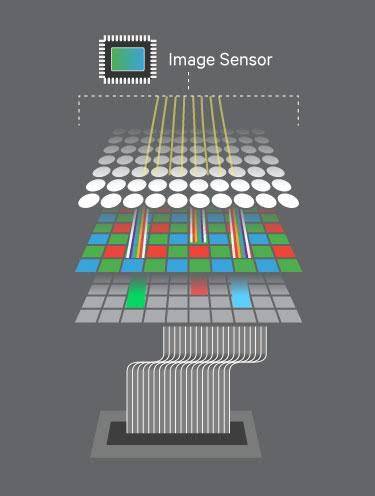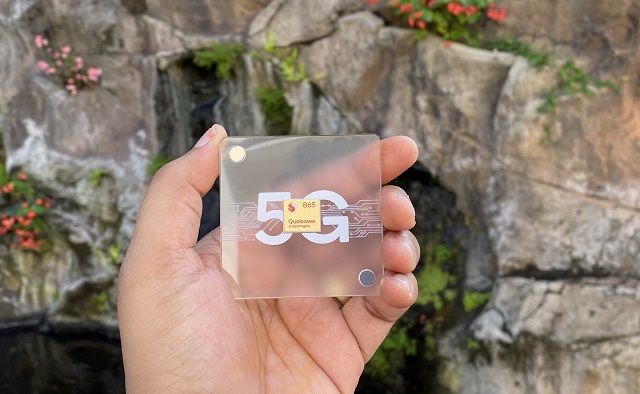Qualcomm Snapdragon 865 vs 855+ vs 855: What's New?
[the_ad id='1307']
It’s December again and Qualcomm has released its brand new chipset Snapdragon 865 in Hawaii. And like every year, Android users want to know the specific hardware details and the improvements it brings over the last-gen chipsets. So in this article, we bring you a comparison between Snapdragon 865, 855+, and 855 along with a detailed analysis of the new processor. Also, the comparison between Snapdragon 865 and Apple’s A13 Bionic is inevitable so we have mentioned that as well. With that said, let’s go through our article on Snapdragon 865 vs 855+ vs 855, where we pit Qualcomm’s best offerings against one another to find out what’s new.
Raw Numbers: Snapdragon 865 vs 855+ vs 855
Before we move forward, let’s take a look at the specs of all three processors.
| Snapdragon 855 | Snapdragon 855+ | Snapdragon 865 | |
| CPU Core | Kryo 485, Octa-core CPU | Kryo 485, Octa-core CPU | Kryo 585, Octa-core CPU |
| CPU Architecture | 1x 2.84GHz (Cortex A76) 3x 2.42GHz (Cortex A76) 4x 1.8GHz (Cortex A55) | 1x 2.96GHz (Cortex A76) 3x 2.42GHz (Cortex A76) 4x 1.8GHz (Cortex A55) | 1x 2.84GHz (Cortex A77) 3x 2.42GHz (Cortex A77) 4x 1.8GHz (Cortex A55) |
| CPU Clock Speed | Up to 2.84GHz | Up to 2.92GHz | Up to 2.84GHz |
| Process Technology | 7nm FinFET | 7nm FinFET | 7nm FinFET |
| GPU | Adreno 640 | Adreno 640 | Adreno 650 |
| DSP | Hexagon 690 | Hexagon 690 | Hexagon 698 |
| ISP | Spectra 380 | Spectra 380 | Spectra 480 |
| Camera Capability | Up to 192 MP | Up to 192 MP | Up to 200 MP |
| Video Capability | 4K HDR @ 60FPS | 4K HDR @ 60FPS | 8K @ 30 FPS, 4K HDR @ 60FPS |
| Charging | Quick Charge 4+ | Quick Charge 4+ | Quick Charge 4+ |
| Modem | X24 LTE 2 Gbps Peak Download 316 Mbps Peak Upload | X24 LTE 2 Gbps Peak Download 316 Mbps Peak Upload | X55 5G Modem 7.5 Gbps Peak Download 3 Gbps Peak Upload |
| WiFi Support | Wi-Fi 6-ready | Wi-Fi 6-ready | Wi-Fi 6-ready |
Performance and Features: Snapdragon 865 vs 855+ vs 855
As we already know, there is not much difference between 855 and 855+ except the CPU clock speed so they are more or less the same. Since Qualcomm has compared the Snapdragon 865 to last year’s flagship Snapdragon 855 in their official documentation, we will use the same chipset in ours. We will see how the new Snapdragon 865 fares against its last-gen chip and what new features it brings for Android users. Now having said that, let’s begin with performance and AI improvements.
When Snapdragon 855 was released last year, it brought a huge improvement over 845 with a margin of 45%. In mobile computing, that is a huge leap over the last-gen chip and many from the tech industry applauded Qualcomm for improving the A76’s core cluster. However, this year the jump in performance is not that huge, albeit it’s a significant one. Qualcomm claims that Snapdragon 865’s CPU delivers up to 25% performance improvement over Snapdragon 855. Similarly, the Adreno 650 GPU on Snapdragon 865 has also seen a steady improvement of 25% over the last-gen chip. In a nutshell, the upgrade in CPU and GPU is good, but frankly, it’s on expected lines and nowhere near Apple’s silicon.

However, in terms of AI computation, Qualcomm has seen tremendous growth. This year with Snapdragon 865, you will get the 5th generation Qualcomm AI Engine that packs incredible tools to deliver super-fast results. In comparison to Snapdragon 855, the latest 865 is 2x more powerful and can deliver AI performance of 15 Tera operations per second. That’s almost a paradigm shift from last year’s chip. All it means for consumers is that you are going to get much faster Google Assistant results, real-time translation, and more. In addition to this, Qualcomm’s Hexagon Tensor Accelerator is 4x more powerful and 35% power-efficient than its predecessor. Simply put, in terms of Artificial Intelligence, Qualcomm’s latest AI Engines are far more capable and it’s only going to get better.
Last year, with Snapdragon 855, Qualcomm made Elite Gaming a part of its SoC. It was designed to bring enhanced gaming performance with HDR and powerful graphics rendering. And this year too, Qualcomm has doubled down on the Elite Gaming experience with the launch of Snapdragon 865. Qualcomm hopes to bring desktop quality lighting and post-processing effects thanks to a new called tool Desktop Forward Rendering. It allows developers to bring desktop-level realism to mobile games and without much effort. Having said that, the best part about Snapdragon 865 is that you will be able to do HDR gaming on a 144Hz display panel with a breeze. Apart from that, Qualcomm from this year onwards will be releasing Adreno graphics driver update over the air (OTA) through OEM channels like Play Store or System Updates.

In terms of graphics performance, we have already discussed the GPU improvement which is said to be 25% better than 855. But besides the raw performance jump, the Adreno 650 GPU is equipped with a new feature called Adreno HDR Fast Blend. It significantly boosts gaming performance with heavy blending that is mostly used in powerful rendering systems. Qualcomm claims that in certain gaming situations, you will likely see a 2x performance jump and that is simply awesome. Having said that, stay tuned with us for more real-life tests of Snapdragon 865 on PUBG and other games.
Coming to the ISP performance of the Snapgradong 865, Qualcomm has made a significant stride with Spectra 480 in comparison to the last-gen Spectra 380. The Snapdragon 865 is capable of capturing 8K video at 30FPS and can take images of up to 200 megapixels. That’s an enormously large number of pixels captured within a fraction of second. For perspective, you could only shoot up to 4K HDR videos at 60FPS with Snapdragon 855. Qualcomm is calling it Gigapixel Speed technology which allows the ISP to operate at a staggering speed of up to 2 gigapixels per second. And thanks to this new technology, now you can take 960FPS slow-motion videos at 720p resolution. All in all, in terms of image and video capturing capability, the Snapdragon 865 is a huge leap over 855.

In the above sections, we discussed the standard SoC things, but does Snapdragon 865 bring anything new to the table? Well, for one, the Snapdragon 865 platform comes with an all-new Qualcomm Sensing Hub that is not available on the previous generation of chips. It allows the device to be contextually aware of its surroundings and without eating too many resources. For example, the Sensing Hub ensures your voice requests are heard clearly and accurately. It uses multiple sensors and intelligent sound recognition techniques to bring contextual AI on devices.

Apart from that, in addition to WiFi 6 and Bluetooth 5 support, Qualcomm is upgrading its separate mobile connectivity subsystem with Snapdragon 865. It’s called the FastConnect 6800 which works in sync with WiFi and Bluetooth to provide superior speed and reliable connection in crowded spaces. And unlike FastConnect 6200 which was available on Snapdragon 855+ and 855, this year Qualcomm has got WiFi 6 certification from the Wi-Fi Alliance. All it means for consumers is that you will have a much better wireless fidelity and performance.

Next, with Snapdragon 865, Qualcomm is bringing support for Super Wide Band (SWB) voice for Bluetooth devices. The company is calling it Qualcomm aptX Voice which is different than Qualcomm aptX Audio. This new standard is the company’s fresh take on wireless audio and it hopes to bring crystal clear sound by reducing latency and increasing battery life.
The Conundrum: What about 5G?
While there have been many guessworks about 5G integration and Snapdragon 865, Qualcomm laid all the speculations to rest last night. The company told The Verge that “the Snapdragon 865 will be exclusive for 5G phones and will require the companion X55 modem”. It’s clear that Snapdragon 865 is a 5G-enabled chipset— irrespective of whether the modem is integrated with the SoC or not. Also, according to some reports, the Snapdragon 865 is said to be released without any modem– not even LTE– in order to push OEMs to opt for the 5G modem.

But the question remains, what about regions where there is no 5G availability like India? Well, the 5G modem will be backward compatible with LTE, 3G and 2G networks. So, if your region does not have 5G, it will fall back to LTE or other networks. Having said that, many users are skeptical about X55 modem’s frequency management. How well it will handle switching between LTE and 5G frequencies and will it be a trade-off against battery life? Nevertheless, the bottom line is that you are getting a 5G phone with Snapdragon 865 whether you like it or not.
Snapdragon 865 vs 855+ vs 855: What is the Verdict?
Having gone through all the points, it’s clear that Snapdragon 865 has made meaningful improvements on expected lines from last-gen chips. However, in some areas like image processing and AI, the Snapdragon 865 blows Snapdragon 855 and 855+ out of the water. Also, keep in mind, you will be getting a 5G phone when devices start launching next year with the Snapdragon 865 chipset in tow. Now, it’s up to you to decide if you want to get on the bandwagon this early or not. Anyway, what do you think about Qualcomm’s new flagship chipset? Does it stand a chance against Apple’s A13 Bionic chip? Let us know in the comment section below.
[the_ad id='1307']
Source link
[the_ad id='1307']